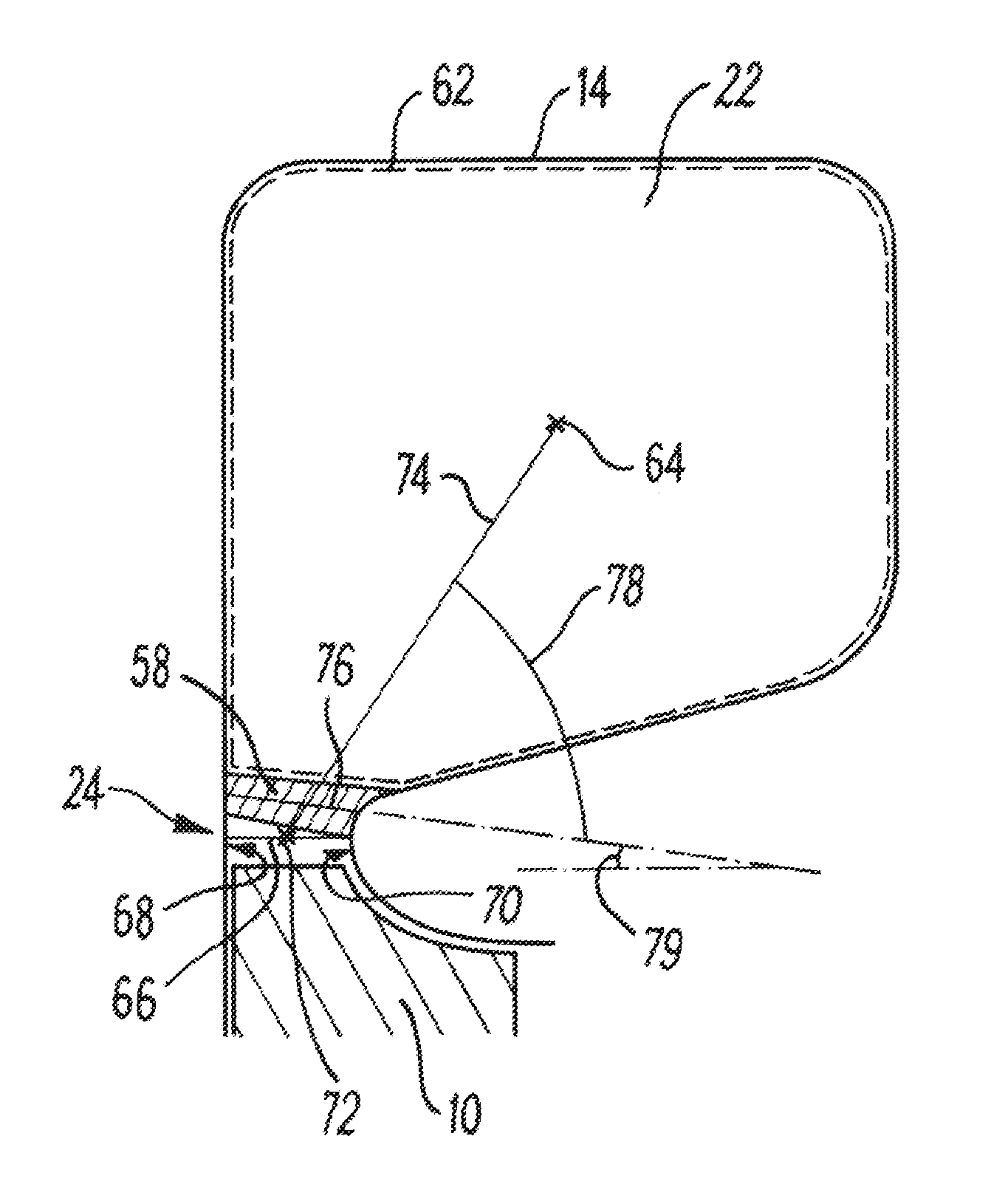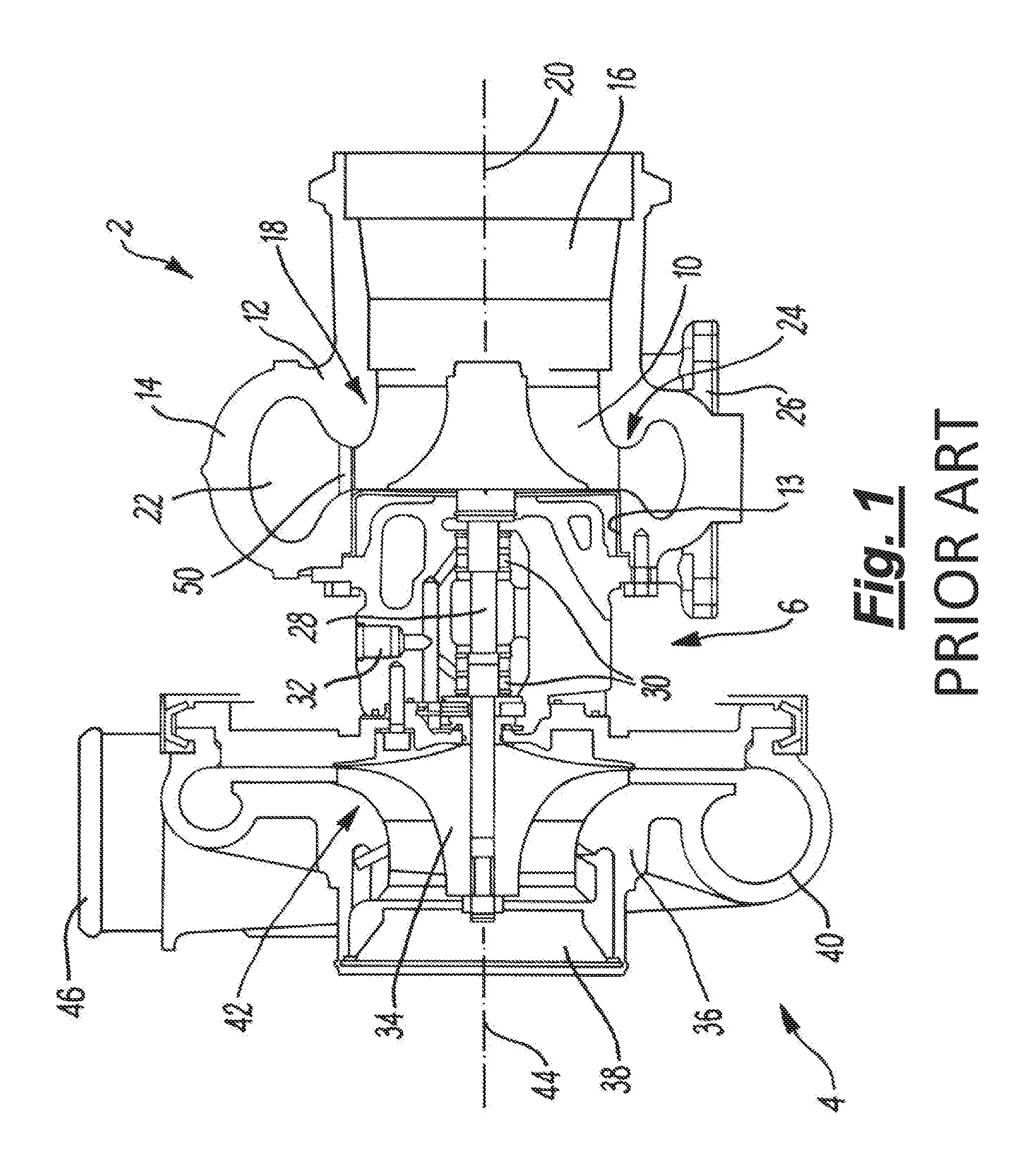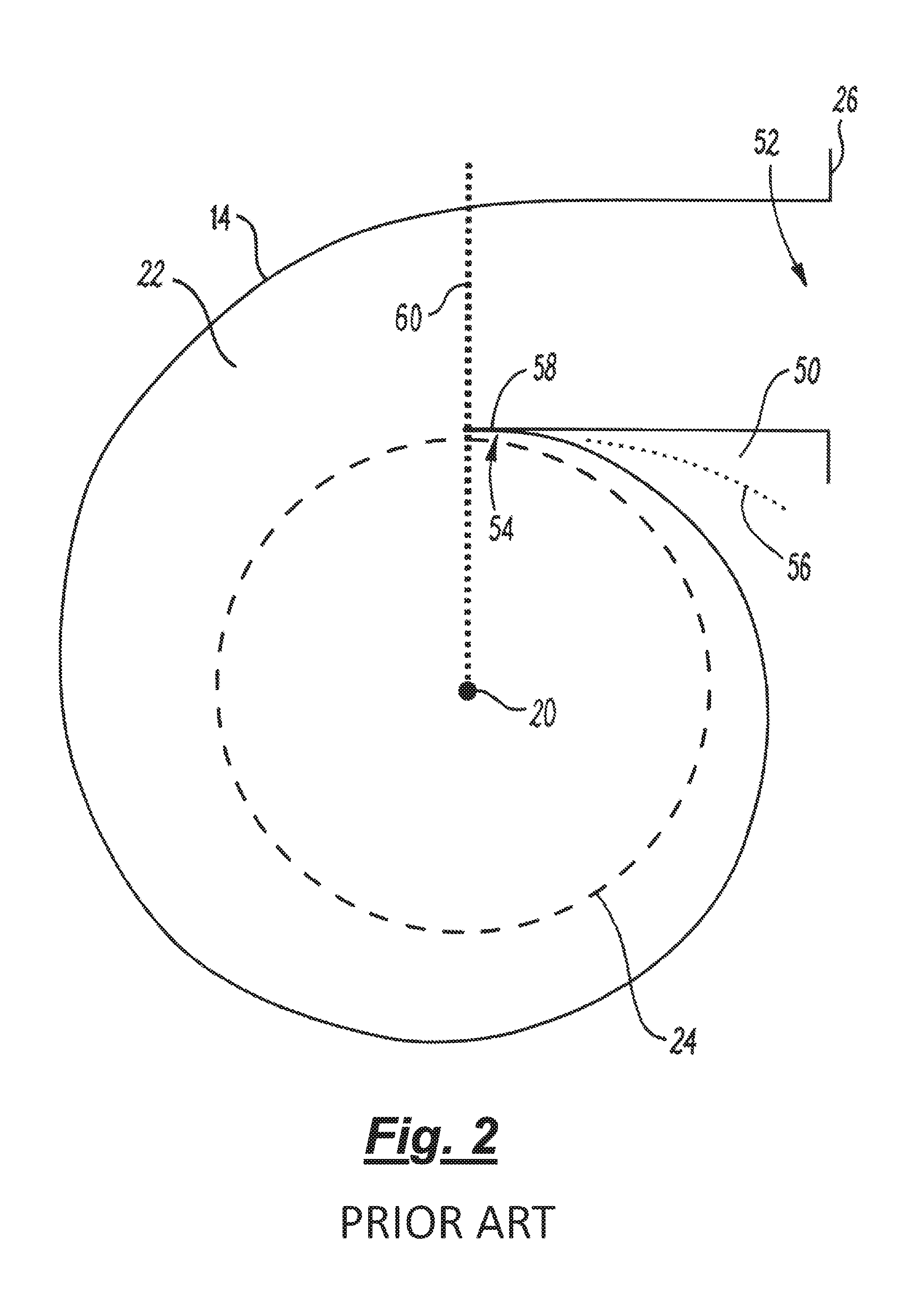Turbine housing
- Summary
- Abstract
- Description
- Claims
- Application Information
AI Technical Summary
Benefits of technology
Problems solved by technology
Method used
Image
Examples
first embodiment
[0091]FIG. 4 shows a cross-section of an inlet volute 14 according to the disclosure. The volute of FIG. 4 is the same as the volute of FIG. 3 with the exception of the configuration of the tongue, therefore only the differences will be discussed here.
[0092]In this embodiment, the tongue tip 58 has been adjusted so that its lateral centerline 76 is no longer parallel to the turbine axis (not shown, but horizontal from the perspective of FIG. 4), but is at an angle 79 of 8° to it. The angle 78 between the lateral centerline 76 of the tongue tip 58 and the line of passage offset 74 is now 64°. This increase in the angle 78 between the tongue tip 58 and line of passage offset 74 reduces the magnitude of the change in A / r across the tongue tip. In addition, this change in angle of the tongue tip 58 decreases its cross sectional area (from the perspective of FIG. 4, the right hand lateral end of tongue tip 58 has been moved downwards towards the throat, shortening the overall lateral wid...
second embodiment
[0095]In the second embodiment, the turbine housing 12 has an additional volute 14′ with an additional volute passage 22′ separated from the volute passage 22 by a dividing wall 86. The additional volute 14′ also has an additional throat 24′ and an additional tongue with an additional tongue tip 58′. The additional tongue tip 58′ has a lateral centerline 76′. The features of the additional inlet volute 14′ have equivalent structure and function to those of the inlet volute 14. The two volute passages 22, 22′ meet at an inlet passage 87 positioned immediately radially outwards from the turbine wheel 10. In this embodiment, the volute passage 22 and the additional volute passage 22′ are both inclined from the radial direction. More particularly, in this case both passages 22, 22′ are inclined from the radial direction in the same axial direction—both are inclined to the right from the perspective of FIG. 6. This may provide an advantageous amount of space to the other axial side of th...
fourth embodiment
[0107]The tongue tip lateral centerline 76 meets the first wall 102 of the throat 24 at an angle of around 90 degrees, and also meets the second wall 104 of the throat at an angle of around 90 degrees. Accordingly, the sum of the angle at which the tongue tip lateral centerline 76 intersects the first wall 102, and the angle at which the tongue tip lateral centerline intersects the second wall 104, is around 180 degrees. The additional tongue tip lateral centerline 76′ meets the first wall 102′ of the additional throat 24′ at an angle of around 78 degrees, and meets the second wall 104′ of the additional throat 24′ at an angle of around 78 degrees. Therefore, the sum of the angle at which the additional tongue tip lateral centerline 76′ intersects the first wall 102′, and the angle at which the additional tongue tip lateral centerline intersects the second wall 104′, is around 156 degrees. Although in this case the tongue tip lateral centerline 76 meets both walls 102, 104 at substa...
PUM
 Login to View More
Login to View More Abstract
Description
Claims
Application Information
 Login to View More
Login to View More - R&D
- Intellectual Property
- Life Sciences
- Materials
- Tech Scout
- Unparalleled Data Quality
- Higher Quality Content
- 60% Fewer Hallucinations
Browse by: Latest US Patents, China's latest patents, Technical Efficacy Thesaurus, Application Domain, Technology Topic, Popular Technical Reports.
© 2025 PatSnap. All rights reserved.Legal|Privacy policy|Modern Slavery Act Transparency Statement|Sitemap|About US| Contact US: help@patsnap.com



